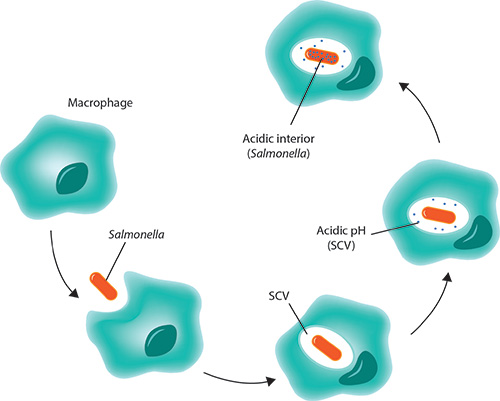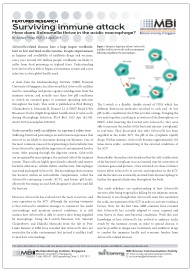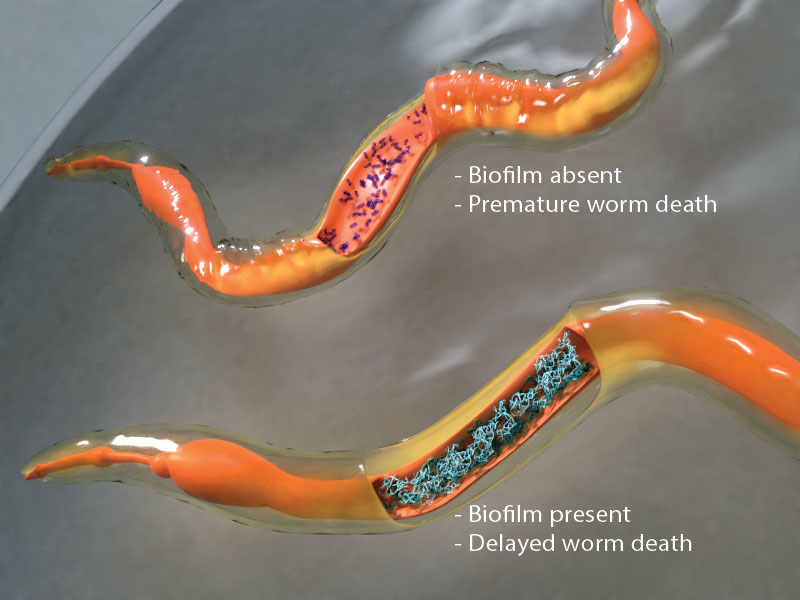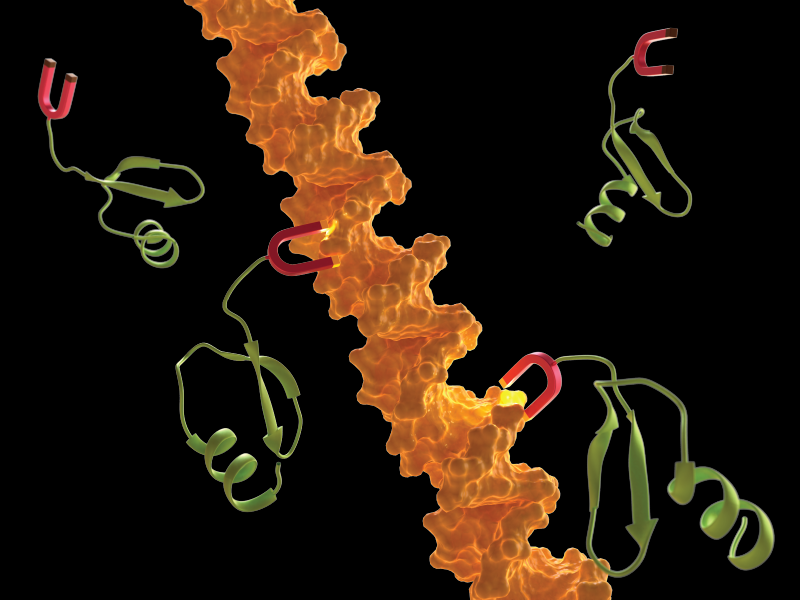Surviving Immune Attack
Andrew MS Wong | APRIL 2015
Salmonella-related diseases have a huge impact worldwide, both in first and third-world countries. Despite improvements in hygiene and availability of antibiotic drugs and vaccines, every year around 100 million people worldwide are likely to suffer from food poisoning or typhoid fever. Understanding how Salmonella is able to bypass our immune system and cause infection is a key global health need.
A team from the Mechanobiology Institute (MBI), National University of Singapore, has discovered that Salmonella acidifies itself to camouflage and protect against acid digestion from the immune system, and actually uses these low pH conditions to switch on essential genes to continue spreading infection throughout the body. This work is published in PloS Biology (Chakraborty S, Mizusaki H, Kenney LJ, A FRET-Based DNA Biosensor Tracks OmpR-Dependent Acidification ofSalmonella during Macrophage Infection, PLoS Biol. 2015 Apr 14;13(4), doi:10.1371/journal.pbio.1002116).
How does Salmonella thrive in the acidic macrophage?
Suffering from food poisoning is an unfortunate experience that most of us are likely to encounter during our lifetimes. One of the most common causes of food poisoning is bacterial infection from Salmonella, typically by ingestion of contaminated food or water. After passing through the digestive system, Salmonella are recognized by macrophages, the sentinel cells of the immune system. These cells are highly specialized to identify and remove harmful substances, cellular debris, and bacteria. Macrophages surround and engulf Salmonella. The macrophage then contains the bacteria within an intracellular compartment, called the Salmonella-containing vacuole (SCV), and lowers pH levels, effectively becoming an acid bath designed to dissolve and kill the bacteria.
Salmonella self-acidifies to spread infection
However, Salmonella has evolved over the years to survive, and even reproduce in the SCV. Although the existing viewpoint is that Salmonella somehow manages to counteract the acidic surroundings and maintain neutral conditions, it is still unclear how Salmonella is able to survive after being engulfed by macrophage. Using the I-switch biosensor, Drs. Smarajit Chakraborty and Hideaki Mizusaki from the lab of Prof. Linda Kenney at MBI, have revealed that Salmonella does not neutralize the acidic environment, but instead it acidifies itself to match its surroundings.
Now, for the first time, MBI scientists have revealed that Salmonella has actually adapted to sense, respond and even thrive in anti-bacterial conditions.
The I-switch is a flexible, double-strand of DNA which has different fluorescent molecules attached to each end. At low pH (acidic conditions), the DNA acts like a hinge, bringing the two ends together, resulting in activation of the fluorophores or FRET. After inserting the I-switch into Salmonella, they were able to measure the acidity of the bacterial interior (cytoplasm), in real-time. They discovered that after Salmonella has been engulfed in the acidic SCV, the pH of the cytoplasm rapidly drops. Within minutes, Salmonella becomes approximately 150 times more acidic, acclimatizing to the external conditions of the SCV.
Remarkably, the authors also found out that this self-acidification of the bacterial cytoplasm was an essential step for activation of virulence genes and proteins. Once switched-on, these virulence factors allow Salmonella to survive and reproduce in the SCV, and the bacteria are eventually secreted from the macrophage to further the spread of infection throughout the body.
This study redefines our understanding of how Salmonella survives after being targeted for killing by our immune system. Previously, it was thought that Salmonella must first neutralize the acidic environment of the SCV in order to activate virulence factors. Now, for the first time, MBI scientists have revealed that Salmonella has actually adapted to sense, respond and even thrive in these anti-bacterial conditions. With this new knowledge of how Salmonella has evolved to embrace acidic attack by the immune system in order to spread disease, it may be possible to design new treatments and antibiotic drugs to combat the immense health and economic burden from Salmonella-related diseases.










